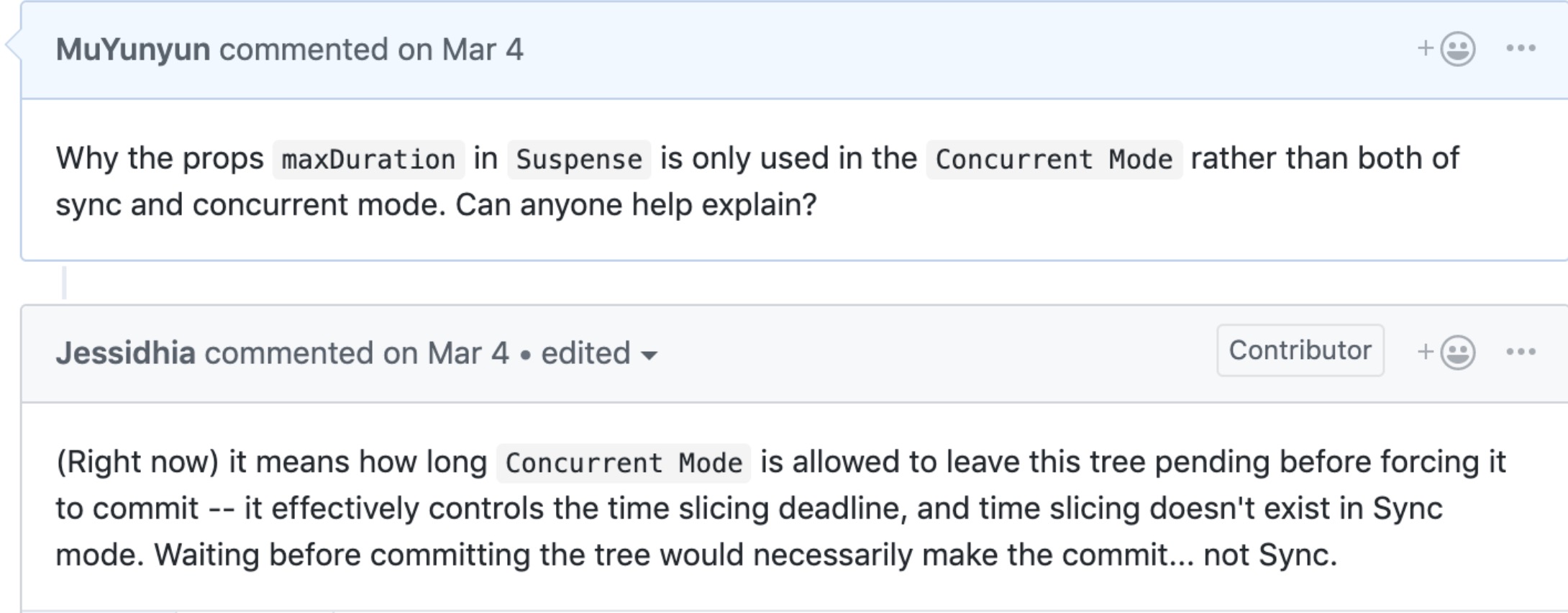Schedule
解决目标对象更快完成渲染与及时响应优先级更高任务之间的矛盾。
Perceived Performance
Perceived performance 可感知到的性能
在流畅性的章节中提到将主线程的一个长任务进行时间分片可以拆分为多个帧任务, 但如果同时存在多个任务则必然会存在一种竞争机制, 于是需要一种 Schedule 机制, 在时间分片中加入动态优先级的概念来真正避免卡顿现象。
Schedule
调度算法思想:
- 任务执行时间得足够短, 能在一帧时间内执行完(时间分片);
- 不同任务存在不同的优先级;
任务的种类
在一帧中执行的任务种类有以下几种类别:
user-blocking tasks: 基于用户的交互的任务(可见), 需在当前帧处理; ->input、rAF、microtask(顺畅的交互应小于 10 ms, 下同)default tasks: 基于用户获取数据渲染到界面上的任务(可见), 在当前的帧以及下一帧里处理; ->macrotask(小于 100 ms)idle tasks: 和分析、缓存、排序相关的任务(不可见); ->requestIdleCallback(小于 10 ms)
不能拆分的任务(执行时间较长的 chunk)怎么办?
借助 web Worker
任务的排序机制
任务的排序机制是由 expiration time 这个字段决定的,其值为 callback 的注册时间与当前任务优先级的值之和, 表示过期时间(值越小, 越早执行)。
优先级的值分为以下几种类别:
Immediate: (0ms timeout)需要实时交互的任务; (Do it now)User Block: (250ms timeout)对页面交互有副作用的任务; (Do it now)Normal: (5s timeout)不影响交互的任务; (Do it soon)Low: (10s timeout)可以延迟执行,但最终需要执行的任务; (Do it eventually)Idle: (no timeout)执行与否不影响应用的任务; (Do it if you can)
在了解了 expiration time 之后, 对 Schedule 的流程进行如下概述:
- 所有回调根据
expiration time排好序放入一个队列中; Schedule自己注册一个回调 callback 调用该队列,并下一个帧中执行它;- 在下一帧中尽可能多地执行队形里的回调;
Schedule 源码分析
Schedule 中 4 个比较重要的方法的作用罗列如下:
- requestHostCallback: 提供调用下一帧的能力
- cancelHostCallback: 提供取消当前任务的能力
- shouldYieldToHost: 提供暂停当前任务的能力
- getCurrentTime: 根据该函数获取的值从而判断具体的优先级
JND
JND(Just Noticeable Difference), JND
// Computes the next Just Noticeable Difference (JND) boundary.// The theory is that a person can't tell the difference between small differences in time.// Therefore, if we wait a bit longer than necessary that won't translate to a noticeable// difference in the experience. However, waiting for longer might mean that we can avoid// showing an intermediate loading state. The longer we have already waited, the harder it// is to tell small differences in time. Therefore, the longer we've already waited,// the longer we can wait additionally. At some point we have to give up though.// We pick a train model where the next boundary commits at a consistent schedule.// These particular numbers are vague estimates. We expect to adjust them based on research.function jnd(timeElapsed: number) {return timeElapsed < 120? 120: timeElapsed < 480? 480: timeElapsed < 1080? 1080: timeElapsed < 1920? 1920: timeElapsed < 3000? 3000: timeElapsed < 4320? 4320: ceil(timeElapsed / 1960) * 1960;}
Connection between Time Slicing and Suspense
Time Slicing is the premise of Suspense. Because in each time slicing it can compare the task priority, and then determine whether to show the loading.

is-input-pending
- 相比
requestIdleCallback, 其有更简洁的 api; - 另外其不会受到优先级的限制;
相关文章
- scheduling-on-off-main-thread: 讲解了如何在帧里拆分任务以及使用 worker 的一些限制
- Scheduling in React: 任务的排序机制
- main-thread-scheduling: schedule API in future. 核心是从最高优先级的任务中挑选时间过去最久的任务。
- Scheduling is the Future: @ReactEurope 2019 speaker: @aweary